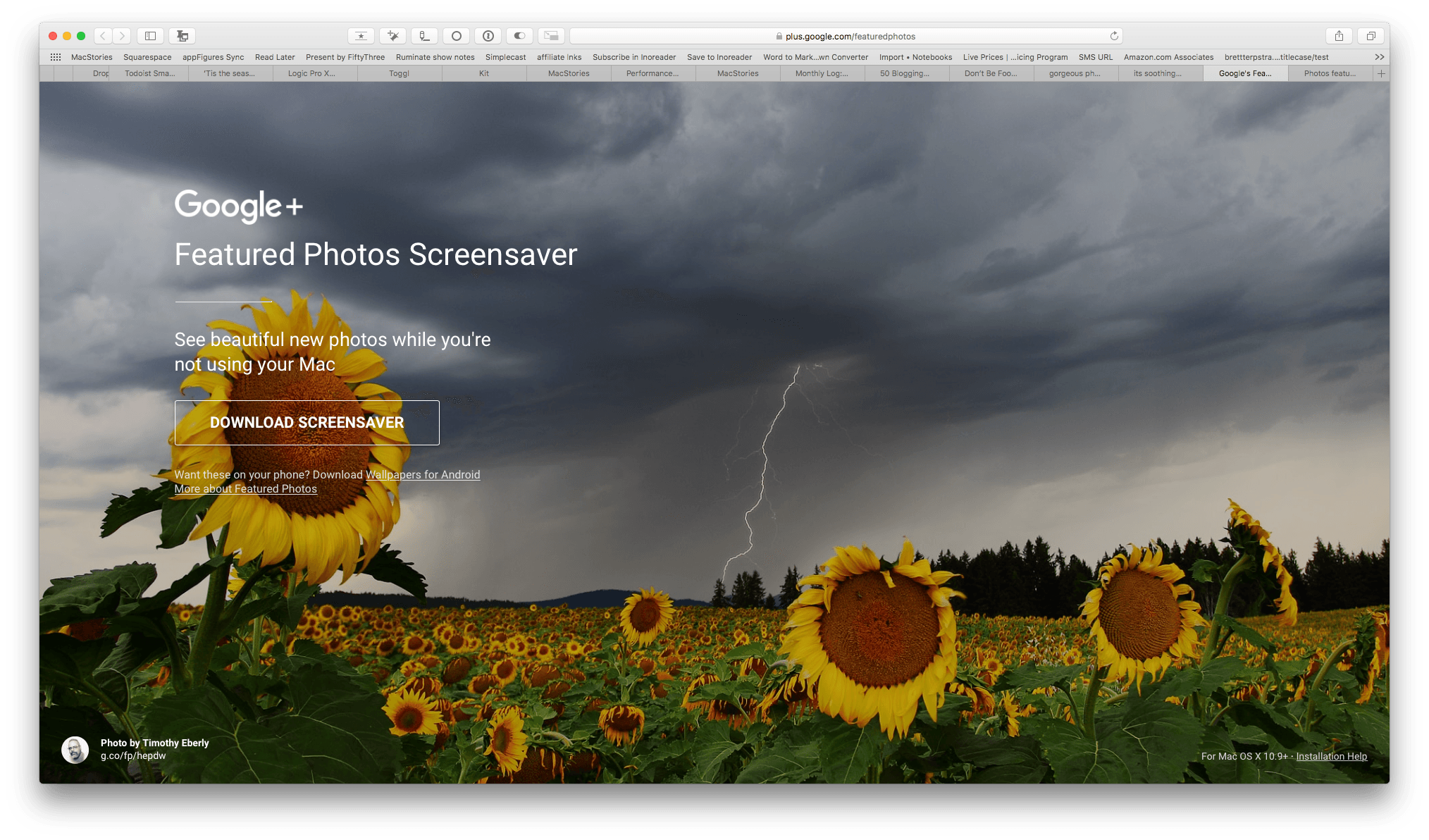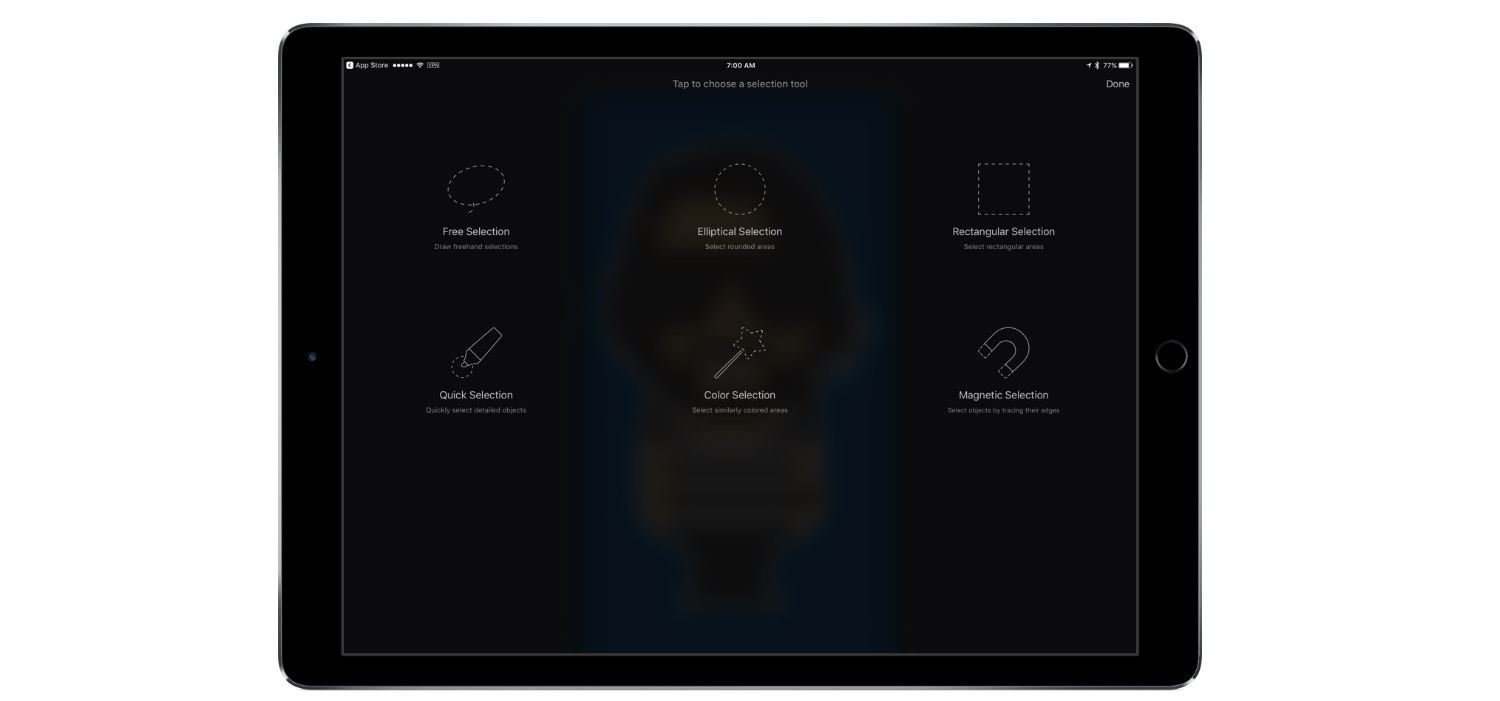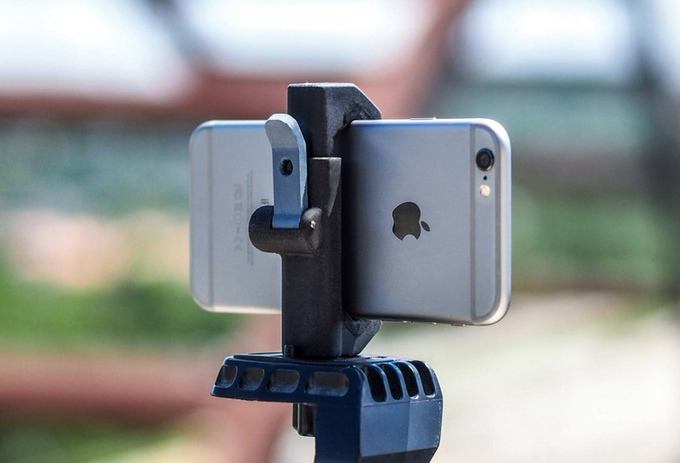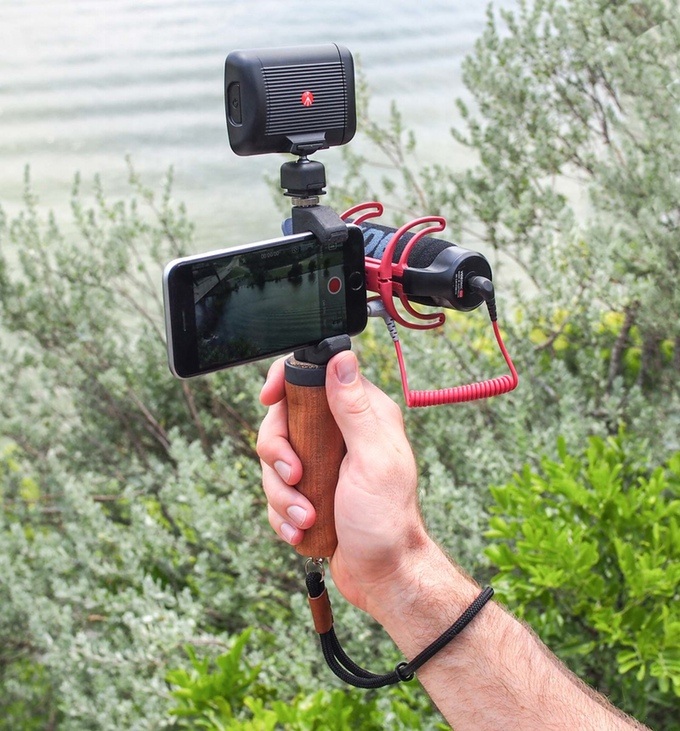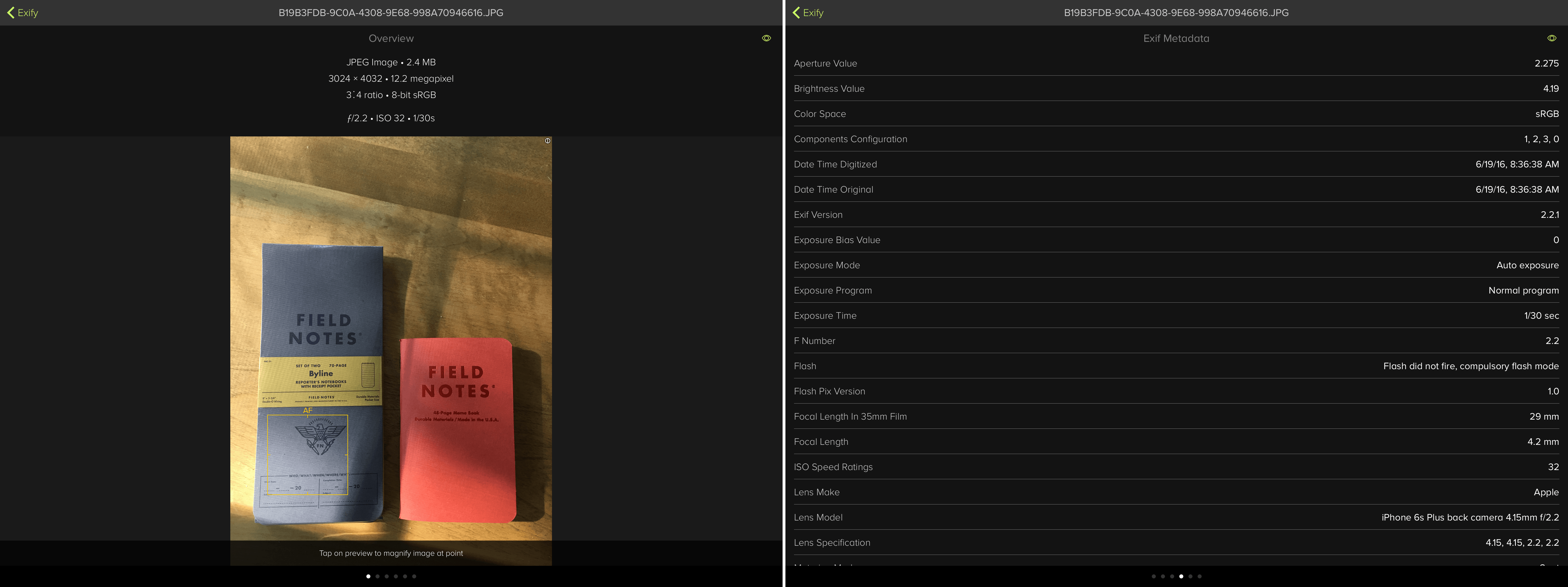Popular Google+ photos have been available via Google’s Wallpapers app on Android and on Google Fiber and Chromecast devices, but today, Google is bringing them to macOS too. Google’s Featured Photos Screensaver rotates through a selection of high-resolution photographs that have been publicly shared on Google+ and don’t include people in them. Each photo also includes information about the photographer that took the shot and links to more of their work. If you’re a photographer and want your photos to be considered for inclusion in the app, you can learn more here.
Posts tagged with "photography"
Google Introduces Featured Photos Screensaver for macOS→
Stress-Testing iPhone 7 Plus’ Portrait Mode→
Brian L.W. Moore on iOS 10.1’s Portrait mode:
While a lot is super good, there are a couple areas where the Portrait Mode just ain’t gonna cut it. Complicated foreground and background combinations seemingly overwhelm it and the blur edges get confused throughout the photo.
Portrait Mode doesn’t even begin to successfully work with translucent or shiny objects. Though this is pretty understandable considering the hardware — attempting to detect depth on objects like these is probably difficult. Not sure if Apple will ever be able to get over this one unless their machine learning becomes near-perfect.
He concludes:
People have asked me what camera I used to take these photos, which is I’d call a good sign. I like how they look, and this is a camera I can keep in my pocket all day as I walk all over a beautiful country. That’s a win for me.
Check out his examples here and here. They’re not technically perfect, but I think they’re beautiful, and they were made on a portable computer. Impressive.
Prisma Filters Extended to Video→
Prisma is a popular free photo app with bold filters in the style of famous artists. With an update today, Prisma filters can also be applied to video. According to BuzzFeed:
Prisma uses AI to “repaint” still images in the styles of famous painters. It debuted in June and already has 70 million users, according to co-founder Aram Airapetyan.
Check out BuzzFeed’s article for some great examples, like this one, of what Prisma can do with video:
iPhone 7 Plus Depth Effect Is Legit→
Fascinating take by Stu Maschwitz on the iPhone 7 Plus’ Portrait mode, coming with iOS 10.1:
So don’t ask if Depth Effect is perfect. A better question is if its failures are distracting. And I have certainly taken some test photos where they are. But the funny thing about test photos is that there’s often nothing worth photographing in them, so you just stare at the problems. In my own testing, whenever I’ve pointed Portrait Mode at something I actually care about, the results have been solid.
So back to the question of whether we should care about a fake blur applied in post to a telephone photo. When I tweeted the above shot, someone replied with a reasonable question: wouldn’t I love the photo just as much without the effect? I replied no, and added:
Composition matters, and focus is composition in depth.
How RAW Changes iPhone Photography→
Ben McCarthy, writing for iMore:
Editing RAW files feels like a huge leap forward in terms of mobile photography: With iOS 10, the iPhone is evolving from a great camera for taking casual photos with into a capable professional tool. It still has plenty of limitations, but I suspect we’ve passed a tipping point.
But shooting while out and about is one thing. What about using the iPhone in a studio? I gathered together a couple of friends to do a little impromptu photoshoot to see how the iPhone would hold up.
Ben is the developer of Obscura, which I featured in my review yesterday because of its native RAW support on iOS 10. He makes some good points on the limitations and advantages of shooting RAW on iPhone.
Shot on iPhone: The Human Family→
Apple’s Shot on iPhone ad campaign has been around on billboards, in magazines, and on television since 2015. The campaign has featured both still photography and videos shot by customers on the iPhones, usually highlighting a specific feature of the iPhone camera or a specific theme, like Mother’s Day.
Today, Apple released a new Shot on iPhone television ad called ‘The Human Family,’ which according to Fast Company will air during the opening ceremony of the Olympics in Rio, Brazil on Friday. The ad features photographs and video taken by iPhone users of people from around the world with narration by poet Maya Angelou, who reads a version of her poem ‘The Human Family’ backed by a piano piece called ‘I Already Am a Great Matriarch’ by Rob Simonsen from the score of the Zach Braff movie ’Wish I Was Here’.
Pixelmator for iOS Adds Quick and Magnetic Selection Tools
Pixelmator 2.3 for iOS was updated today to add the same Quick Selection and Magnetic Selection tools that were introduced on the Mac with Pixelmator 3.5 in May. The Quick Selection Tool lets you paint over an image with your finger to select it. Magnetic selection grabs the outline of an object based on anchor points you create as you trace around the object with your finger. Pixelmator detects the edges of the object in the image and snaps the section to them. In my brief tests, both selection tools worked well and are particularly well-suited to touch.
In addition to the new selection tools, Pixelmator 2.3 adds many small refinements and other improvements, including:
- Apple Pencil pressure sensitivity support for the Quick Selection Tool;
- Greater Apple Pencil precision when using the Free Selection Tool;
- a ‘tap to invert selection’ button;
- improvements to the precision and speed of the Color Selection Tool; and
- snap to pixel precision for the Free, Rectangular, and Elliptical Selection Tools.
Pixelmator 2.3 for iOS is a free upgrade for existing Pixelmator customers and is available to new customers on the App Store for $4.99. Pixelmator 3.5 for Mac, which we previously covered, is available for $29.99 on the Mac App Store.
The All-New Glif iPhone Tripod Mount→
The first Glif, an iPhone tripod mount by Studio Neat, was released in November 2010. Fast forward almost six years to today and Studio Neat is back with an all-new version of the Glif that looks like the best one yet.
Having a tripod mount for your iPhone is surprisingly handy. Club MacStories members may recall that just last month, Graham Spencer and I used the Glif for two very different projects. Graham mounted his iPhone to a Glif to take time-lapse movies of the Australian sky, while I used my Glif with a GorillaPod tripod and microphone to record interviews with developers at WWDC. Those projects, which we described in detail in the Club MacStories Monthly Log, were very different, yet perfectly suited for the Glif.
The latest version of the Glif focuses on three areas. The first is a quick-release lever that makes it easier to get you iPhone in and out of the Glif. The second is multiple mounting points that let you mount the Glif in landscape or portrait mode, or attach additional items to the Glif like a light and microphone that can turn your iPhone into a portable movie rig.
The third improvement to the Glif is the introduction of two accessories. The first is a handle that screws into one of the Glif’s mounting points. The handle should make it easier to hold your iPhone steady without accidentally covering the camera lens with your finger. The second accessory is a strap that you can loop around your wrist for added protection against dropping your iPhone.
As with previous Studio Neat products, the new Glif is a Kickstarter campaign. Over time, I’ve become more cautious about the Kickstarters I back, especially when it comes to hardware products, but Studio Neat is one of the few companies where I do not hesitate to back a product I want, because it has a solid track record of past success. For a $25 pledge, you will receive the new Glif if the project is funded, while $50 gets you the Glif, handle, and wrist strap. If you want two complete sets of the Glif and its accessories, you can pledge $100.
The Iconfactory Celebrates Its Twentieth Anniversary
The Iconfactory is celebrating its 20th anniversary this week with a special website that shows off the evolution of its website, icon, and animations through the years, chronicles major events in the company’s history, and much more. I got a sneak peak at the site after my WWDC interview with Craig Hockenberry and this isn’t something you want to miss. It’s a fascinating exploration of the evolution of web and icon design over the past two decades.
In addition to the 20th anniversary site, the Iconfactory released a new photography app for iOS called Exify, that provides photographers with several pages of metadata for any photo on your iOS device. Whether it’s a histogram, location data, or data about where the camera was focused, Exify can display it. Exify also includes extensions that let you add watermarks and copyright data to images nondestructively, get data about an image from within Photos or another app, and magnify images.


